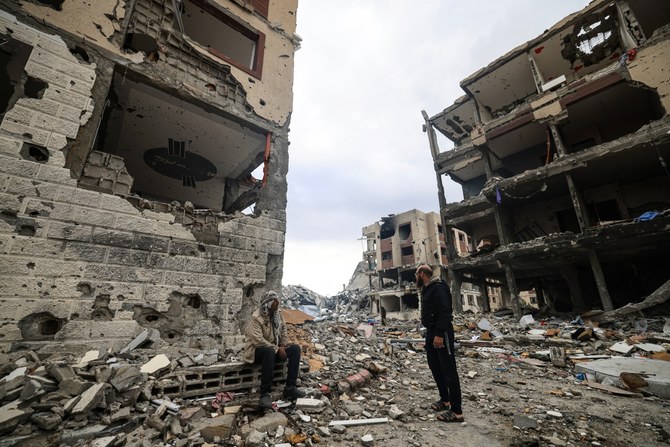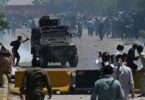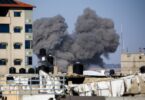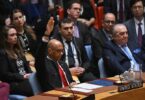Ghassan Charbel
The date is March 9, 1973. Two generals rejoice over the news of a death that they deemed to be the “grand prize.” The generals are Ariel Sharon and Israeli Defense Minister Moshe Dayan. Tales at the time said Dayan wanted to see the body himself and, when he did, he ordered that sweets be handed out to the soldiers involved. Yes, the corpse was that of the “Guevara of Gaza,” who was released from prison years earlier with an increased determination to fight the occupiers.
The Guevara of Gaza, whose real name was Mohammed Al-Aswad, was born two years before the Nakba. When it happened, his family was displaced from the West Bank to Gaza. He was drawn to the ideas of the Arab nationalist movement and later joined the Popular Front for the Liberation of Palestine, which was led by Dr. George Habash. He admired what had happened in Vietnam, as well as Fidel Castro and the legend that was Ernesto “Che” Guevara. In the early 1970s, Sharon arrived in Gaza with an agenda to carry out assassinations. A special unit was formed to carry out the task. It was led by Meir Dagan, who would later become chief of the Mossad. Al-Aswad plotted a series of bomb attacks on Israeli patrols and took part in some of them.
Gaza was rapt by this phantom, who regularly changed his place of residence. He exhausted the occupiers to such an extent that Dayan once declared: “We control Gaza by day and Guevara controls it by night.” One day, Israeli forces surrounded a house where its No. 1 most-wanted man was hiding. He exited the house all guns blazing. The Israeli forces fired back and shot him dead. The two generals rejoiced, believing that this chapter had ended. Half a century after the death of the “first general of Gaza,” Israeli generals were taken by surprise when the “third general of Gaza” declared the launch of last month’s Al-Aqsa Flood operation. His name is Mohammed Deif. Israeli agencies have long dreamed of assassinating him. They have targeted him five times. The first succeeded in injuring him and the second killed his wife and two of his children. The Nakba had also displaced his family to Gaza and he grew up in Khan Yunis. He too left an Israeli prison with a greater determination to fight the occupiers. He is like a phantom. He is always on the move and no one knows where he lives.
Guevara was not his idol. Instead, he looked up to Ezzeddine Al-Qassam and Ahmed Yassin. He joined Hamas, which was officially formed in 1987. Deif took charge of Hamas’ forces after Israel’s assassination of the “second general of Gaza,” Salah Shehade, in July 2002.
In the mid-20th century, a man named Yasser Arafat arrived on the scene. He dreamed of going down in history as “the first bullet and first state.” Israel did not derive lessons from its experience with Arafat. The rivers of blood kept flowing for decades. Has it not learned that killing the “generals” of Gaza will not break its will? I met with a man who was involved in the conflict over the past five years. He said the horrors that have recently taken place in Gaza have returned the issue of an independent Palestinian state to the agenda of major world powers at a time when Israel and its allies had succeeded in setting it to the side. Knockout blows are impossible in this crisis. Israel tried them and it has now found itself confronted with a new generation no less determined or fierce than previous ones.
The man said the complete elimination of Hamas was impossible, just as it was impossible to eliminate Fatah and the Palestine Liberation Organization. These forces are more than just a military apparatus. They are pursuing rights above all else. The man asked if Hamas could invest the developments in Gaza to form a state? Could it reconcile with reality, as happened with the PLO? Could we ever see Hamas politburo chief Ismail Haniyeh seated with an Israeli delegation at an international conference? When you negotiate with your enemy, then you are recognizing their existence. Since you are incapable of eliminating him, then are you obligated to reach a settlement with him? In 2017, Hamas agreed to the idea of an independent Palestinian state, but it never even considered recognizing Israel because that would have led to a long-term and open truce. Would Israel agree to this? Would its supporters agree to this? Would Hamas agree to the formation of a Palestinian state that is free of weapons?
Could we ever imagine Haniyeh at the White House, extending his arm to shake the hand of an Israeli prime minister like Arafat did with Yitzhak Rabin? We must remember that Hamas and Palestinian Islamic Jihad, through their suicide attacks, played a major role in scuttling the Oslo Accords. Israel is also culpable when it undermined the agreements and left nothing to implement. Are we allowed to forget the obvious Iranian touch in Hamas and Palestinian Islamic Jihad’s behavior? Ending the conflict will be difficult and complicated. It will demand strict decisions that are more dangerous than those needed to extend or escalate the fighting.
For more than half a century, Israeli and Palestinian generals have come and gone, but the river of blood has kept on flowing. The Arab world has paid a very hefty price for the Israeli oppression of Palestinians. The Israeli generals tried all options to eliminate and oppress the Palestinians, who continued to rise up with their fists, stones, bullets or explosive belts. The world was deluded into believing that the volcano would stop erupting and become dormant. The world committed several errors for a long time, particularly the “sole major power.” I recall descriptions of Arafat by Mahmoud Darwish and Mohsen Ibrahim, both of whom he was close to. They said that seeking a settlement was definitely harder for him than firing the first bullet. They also said that, when he shook Rabin’s hand, he was confident that the Palestinian state was a “stone’s throw away.” They agreed that, in this bitter conflict, “the decision to agree to a solution was more difficult than choosing war.”







